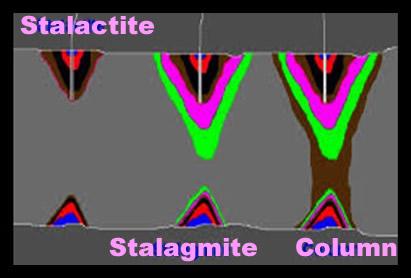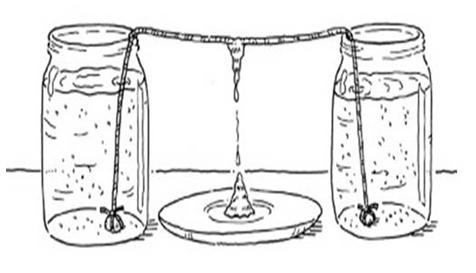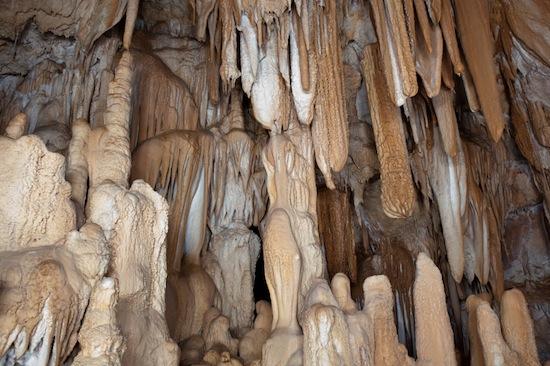Overview
Caves are unique geological formations. Stalactites and stalagmites form very slowly over thousands of years through a rather simple process that all begins with dripping water. In fact, a stalactite or stalagmite grows only less than one inch each every 100 years.
Many caves are made of limestone, a rock that is easily dissolved. Since caves are usually found underground, rainwater constantly drips down through the roof of the cave. Minerals from the limestone are dissolved into the water. The mineral that is dissolved by the dripping water is called calcium carbonate, also known as calcite. As the water trickles down from the ceiling of a cave, it drips ever so slowly. Once the water hits the air inside the cave, the water evaporates and the calcite in the water hardens. This result is deposits of rock in the shape of a stalactite or stalagmite -stalactites, being the icicle-like formations that hang from a cave ceiling and stalagmites being the cone shapes that pile up on the cave floor. This process is called deposition, which comes from the word "deposit" meaning "to build up". If the deposition remains undamaged for long enough, the stalactite and stalagmite will touch and a column will form. The limestone rock of the cave, with the help of rainwater, has dissolved and hardened into a fascinating new shape!

Scientific Terms
stalactites, stalagmites, dissolve, formation, hardening, deposition, minerals, calcium carbonate, limestone
References
The Columbia Encyclopedia, Sixth edition. Columbia University Press (2007).
Stalactite and Stalagmite. Retrieved on November 15, 2013 from http://www.encyclopedia.com/doc/1E1-stalacti.html
Related videos
Hey there! Here are some awesome videos about this science project that we think you'll really like. They're not only super fun, but they'll also help you learn more about the science behind the project. So sit back, relax, and get ready to have some fun!!





